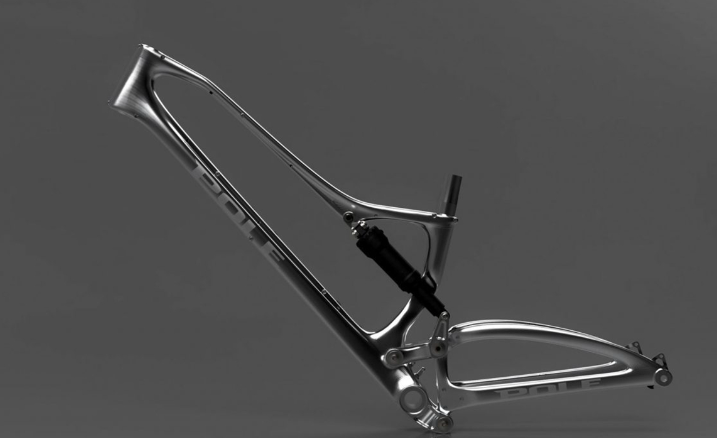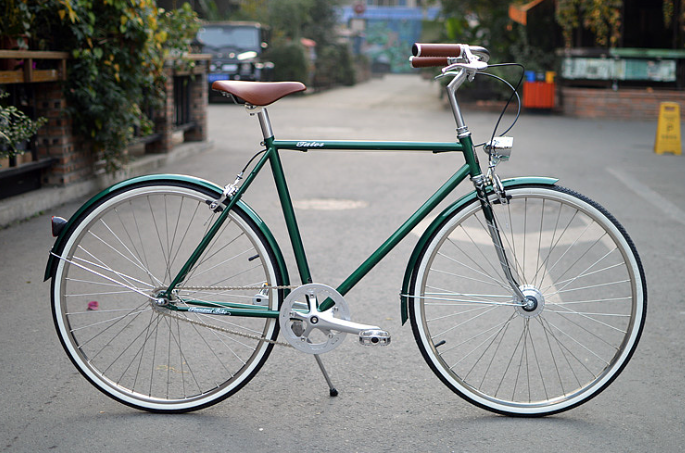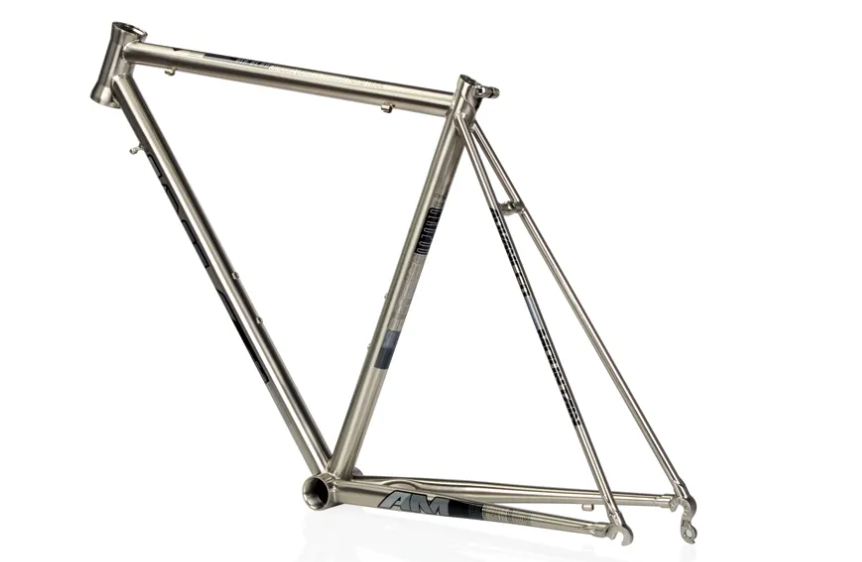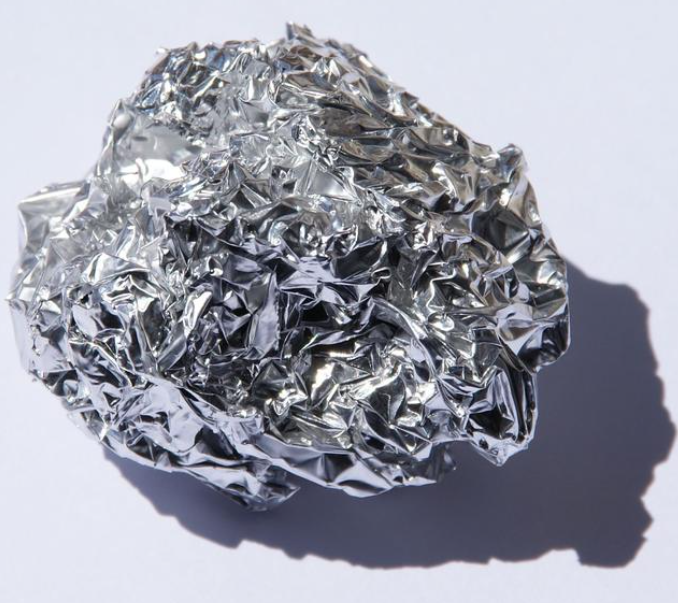When choosing from all bike frame materials, you always need to consider so many factors, including weight, budget, duration, and what you expect the frame and the entire bike to perform. During this decision making process, having an idea of what bike frame material you are going to pick is the very first step. There are bike frames using different materials including carbon fiber, steel, aluminum and titanium bike frame. Here is a detailed introduction of what they are and a comparison research of what pros & cons they respectively have.




Here we will discuss the key characteristics of aluminum, steel, titanium and carbon fiber bike frame, as well as their respective pros &cons when different materials are used to make bicycle frames.
1. Aluminum Bike Frame
1.1 Advantages – Aluminum Bike Frame
Despite road or mountain bikes, aluminum bike frame are among the best choices for more expensive, performance-focused bike frames. Generally, aluminum bike frames are relatively light and rigid. They are robust and weigh only 60-70% of the same volume of steel. Compared with the steel bike frame, because the density of aluminum is much lower than that of steel, under a specific overall bike frame weight budget, the aluminum bike frame can be much lighter and so it can have a thicker pipe diameter which means better rigidity for sure. You can see that most aluminum bike frames in the market have a frame pipe/tube thickness of twice that of steel frames, and aluminum bike frames have a pipe/tube outer diameter of 20-30% larger than steel frames.


1.2 Disadvantages – Aluminum Bike Frame
Among all the bike frame materials, aluminum bicycle frames have some obvious disadvantages. Firstly, aluminum has relatively high rigidity, which makes it perform poorly in absorbing road vibrations. When riding on rough roads, aluminum frames will transmit more vibrations to the rider. Long-term riding may make the rider feel uncomfortable and even increase fatigue. Secondly, the corrosion resistance of aluminum frames is limited.
Although it has undergone certain surface treatments, it is still easily corroded in humid or harsh environments, affecting the beauty and service life of the frame. Thirdly, aluminum frames are prone to permanent deformation when subjected to large impacts. Compared with some other materials, it has insufficient toughness and is difficult to return to its original shape once deformed. Finally, the welded parts of aluminum frames are relatively fragile. If the welding process is not good, cracks and other problems are easy to appear at the weld, affecting the overall strength and safety of the frame.
1.3 Conclusion on Aluminum Bike Frame
In general, aluminum frames are more rigid and relatively light than steel frames, less expensive than carbon fiber frames (aluminum frames cost about 20 percent of carbon frames), and more durable. The disadvantages of an aluminum bicycle frame are also apparent, as it does not provide adequate comfort and always faces the problem of metal fatigue.
2.Steel Bike Frame
2.1 Advantages – Steel Bike Frame
The aluminum alloy has a lower density (lighter weight), so the aluminum frame can use thicker pipes. The thicker pipes cause the high rigidity of the frame made of aluminum alloy. It should be noted that the steel itself is much more rigid than the aluminum alloy. This means that frame manufacturers can produce frames with thinner steel that meet the rider’s requirements for frame rigidity. This also brings another advantage to the steel frame, that is, the steel frame has a certain flexibility. This improves comfort in cycling. In terms of metal fatigue, the steel frame can bear the stress below a specific limit value for infinite times without failure. In contrast, the frame made of aluminum alloy will get metal fatigue over time, and the ability to bear the stress gradually decreases.


2.2 Disadvantages – Steel Bike Frame
Since the emergence of bicycles, steel has been the mainstream material used to manufacture frames. Steel bike frames are still widely used today. The main drawbacks of steel bike frame are its heavy weight and high cost. It is denser and more expensive to produce than aluminum. This ensures that aluminum remains the preferred choice for most metal bike frames today.
2.3 Conclusion on Steel Bike Frame
In general, steel bike frames provide greater comfort than aluminum frames, do not create metal fatigue, and are cheaper than titanium frames. Meanwhile, steel is expensive and easily corroded. In terms of weight, aluminum frames typically weigh about 1500 grams, while steel frames weigh more than 3000 grams.
3. Titanium Bike Frame
3.1 Advantages – Titanium Bike Frame
Most frames made of other materials will inevitably fail after extensive and intensive use. However, the titanium frame will not. They have very high fatigue resistance. They improve shock absorption without deforming. This reduces the risk of failure.


Titanium alloys offer more significant advantages over other metals when used as a material for bicycle frames. Like aluminum, titanium alloys have a lower density than steel so that frames can be lighter and still have thicker tube walls. Data show that a particular thickness of titanium alloy pipe has the same tensile properties as a steel rube material with twice the thickness.
3.2 Disadvantage – Titanium Bike Frame
First of all, high price is a significant shortcoming. Usually, you need to spend more than 2000 dollars for a single frame. The extraction and processing of titanium are complex, with high technical requirements and a long time-consuming process. Coupled with the difficulty in welding, which needs to be carried out under the protection of inert gas, the cost remains high. Secondly, it is at a disadvantage in terms of weight.
Although lighter than steel, it is still heavier than carbon fiber, increasing the energy consumption during riding and affecting riding efficiency. Moreover, some people feedback that the bottom bracket area may be relatively soft, and the power transmission is not direct, affecting the power output. In addition, the appearance color is relatively single, usually silver-gray metallic primary color. Unlike other materials, it cannot have a rich appearance, and the personalized choices are limited. Finally, it is difficult to repair. Once damaged, professional technology and equipment are needed, increasing the maintenance cost and difficulty.
3.3 Conclusion on Titanium Bike Frame
Titanium frames are generally robust, durable, free from metal fatigue, and lighter than steel frames. In addition, titanium is not corroded, so titanium frames do not need to be painted, so scratches and bumps are not a problem. However, titanium frames are usually more expensive than carbon frames. The titanium frame is also challenging to process, but the weight is more significant than carbon fiber and a part of aluminum alloy.
4. Carbon Fiber Bike Frame
4.1 Advantages – Carbon Fiber Bike Frame
Since their appearance, carbon fiber frames have been the preferred material for high-performance bicycle frames. Carbon fiber is an incredible material with great adaptability. Engineers can re-design and shape carbon fiber frames to precise requirements, ensuring they give you the best aerodynamic performance.


A critical difference between carbon fiber and all metallic materials is the multi-directional nature of carbon fiber materials. This means that their physical properties are different in different directions. If you need to know what material multi-directional is, imagine you’re trying to split a piece of wood. If you cut down toward its fiber growth, you can easily split it, but you can hardly split it from the side. The same is true for carbon fiber, but the difference is that the multi-directional nature of carbon fiber can be designed artificially. We can add more carbon fiber materials at specific details to enhance the tensile properties of this location in particular directions. Careful adjustment of the characteristics of each part of the frame means that the carbon fiber frame can be designed to meet the specific requirements of different bicycles.
4.2 Disadvantages – Carbon Fiber Bike Frame
Among all the bike frame materials, carbon fiber bike frames are expensive and more vulnerable to collision than any other material. There are better alternatives, cheaper aluminum frames offer a similar or better riding experience for the least amount of money. And carbon fiber bike frames cannot be drilled compared to metal frames. Many bike parts need help to be installed, especially press-fit bottom brackets. In addition, the carbon fiber is also easily crushed, so the carbon fiber frame is very vulnerable to damage in some specific positions. If the carbon frame has been impacted or seriously impacted, you should check it before riding again. Metal frames can worth some money to match the material value when it is sold. However, carbon fiber materials face a different situation. A carbon frame is value is infinitely close to zero if it is damaged.
To be more specific, carbon fiber bike frames have some disadvantages. Firstly, they are expensive. The carbon fiber material itself is costly, and coupled with the complex manufacturing process, the price of carbon fiber frames is generally high. Secondly, there are certain problems with its durability.
Although carbon fiber frames have high strength, if they are subjected to a large impact or an external force exceeding their bearing limit, they are prone to fracture. Once damaged, it is extremely difficult to repair and often requires professional technology and high costs. Thirdly, carbon fiber frames are more sensitive to the environment. Long-term exposure to sunlight or harsh environments may lead to a decline in performance or aging. Finally, the appearance of carbon fiber frames is relatively single, and the color choices are limited. Unlike other materials, it cannot achieve rich appearance effects through various painting methods. And in some cases, carbon fiber frames may have static electricity problems.
4.3 Conclusion on Carbon Fiber Bike Frame
Carbon fiber bike frames generally have excellent rigidity-to-weight ratio and extreme plasticity compared to other bike frame materials. But it is costly and subject to wear and tear. It is vulnerable to damage after collision, and the decrease in value after damage is unacceptable.
5. Suggestion on Bike frame materials
The material of the bicycle frame is primarily steel which is also known as iron alloy. We also have aluminum alloy, titanium alloy, and carbon fiber bike frames that are more “modern”. Nowadays, steel bike frame and titanium bike frame are absolutely popular but honestly not that common. Meanwhile, aluminum bike frame and carbon fiber bike frame are like more mainstream options for most road bikes, mountain bikes, and BMX bikes form the perspective of overall performance and cost-efficiency.
6. Extra Information
6.1 Why alloying aluminum/iron/titanium with other medal?
Pure aluminum can be easily made into aluminum coils, and you can knead a piece of aluminum film into a ‘paper ball’. So pure aluminum/Iron/titanium is too soft to be used in bike frames that require very high rigidity. By alloying aluminum with other elements, its physical and chemical properties can be altered to make it more suitable for various applications.


Aluminum alloys typically have high strength, less weight, and stronger corrosion resistance and are widely used in aerospace, automotive manufacturing, architecture, and electronics. Aluminum alloy is the preferred metal material for the middle-end frame. It is lightweight and rigid compared with bike frames made of other materials, so the cost efficiency is very high. BTW, steel (iron alloys) and titanium alloys (titanium and aluminum alloys) were also invented because pure iron and pure titanium are too soft to be directly used as frame materials.
6.2 How Carbon Fiber Bike Frames Are Made
6.2.1 Design Phase
Fabrication of carbon fiber bicycle frames usually involves several steps. First, designers use computer-assisted design software (CAD) to design the frame’s shape, dimensions, and structure. This design process needs to consider the frame’s geometry, strength, and stiffness to ensure that the final product has the desired performance.
6.2.2 Mold Making
The fabricator will make a mold to produce carbon fiber frames, depending on the design. These molds are usually made of metal or similar materials, and their shapes match the shape of the final frame.
6.2.3 Material Preparation
A prepreg material impregnates a carbon fiber yarn with a resin. Based on the design requirements, the manufacturer will cut the prepreg into suitable shapes and sizes for subsequent production steps.
6.2.4 Manual Layup
The fabricator will manually laminate the prepreg into the mold to form the outline and structure of the frame. In lay-up, they need to ensure that the orientation and layout of the fibers meet the design requirements to provide the required strength and stiffness.
6.2.5 Curing Process
The mold will be placed in an oven or similar curing equipment upon completion of the lay-up. During the curing process, the resin in the prepreg is heated and hardened, holding the carbon fibers together to form a solid structure.
6.2.6 Demolding and Post-processing
Once cured, the frame is removed from the mold. This usually requires careful handling to avoid damage or distortion. The removed frame may require subsequent processing steps such as trimming edges, removing excess material, sanding, and painting to meet final appearance and performance requirements.
6.2.7 Assembly
Finally, the produced carbon fiber frame will be sent to the assembly line and assembled into the final bicycle product with other components (such as wheel, transmission, brake system, etc.).
6.2.8 Quality Assurance
Experienced technicians and sophisticated equipment are required throughout the manufacturing process to ensure that the quality and performance of the final product reach the expected level.
By the way, SUMLON has been manufacturing bicycle parts for over 15 years. Contact us if you are looking for a bike parts factory or a one-stop wholesaler. Peace




